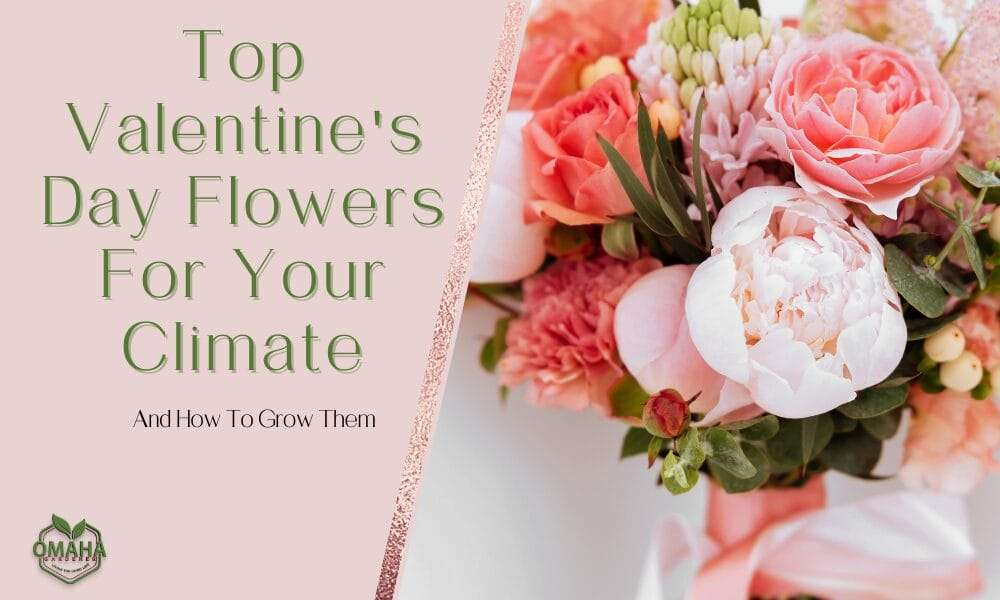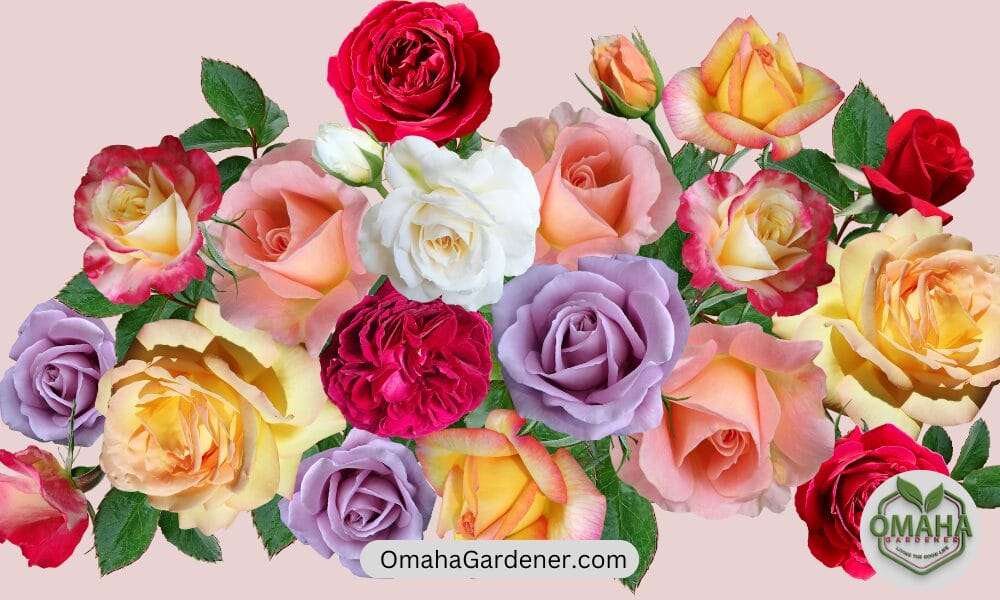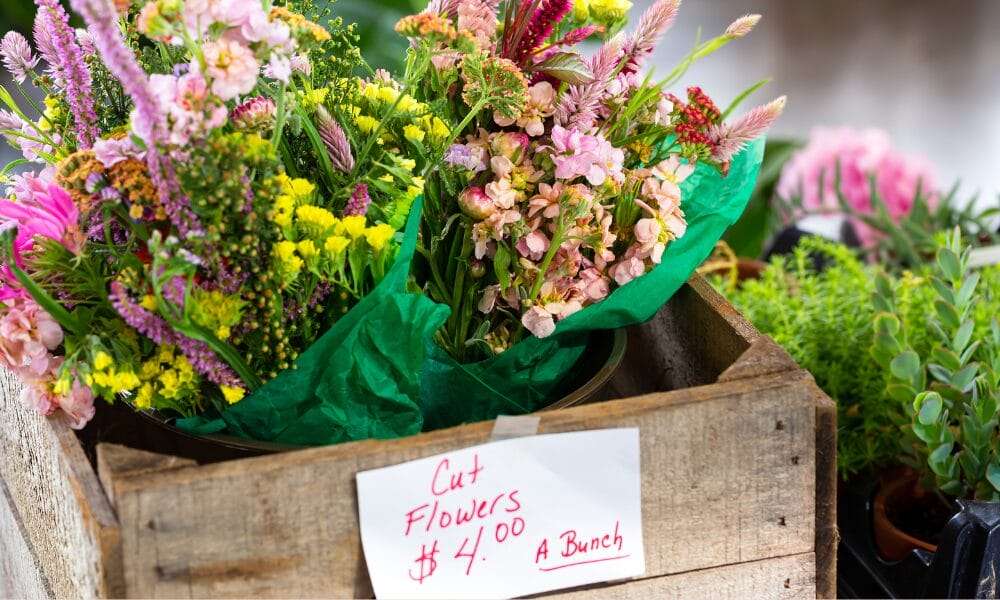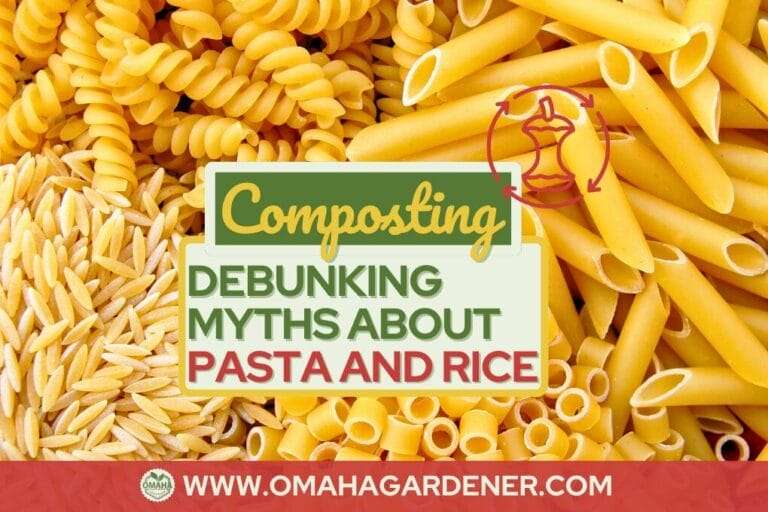
Valentine's Day is right around the corner, and if you're like me, you want to find the perfect bouquet of flowers to show your love and affection. But with so many options, how do you know which flowers will thrive in your local climate? And what if you want to grow your own flowers for Valentine's Day? Well, that's where this article comes in.
We've researched and gathered a list of the top Valentine's Day flowers that are beautiful and well-suited for your specific climate. So whether you're dealing with frigid winters or sweltering summers, we've got you covered. No need to stress about wilted flowers this year, let's find the perfect blooms to make your Valentine's Day extra special.
Table of Contents
Understanding Your Local Climate
When it comes to gardening and choosing the perfect flowers for Valentine's Day, understanding your local climate is essential. Every region has its unique climate, which greatly affects flower growth and blooming cycles. By recognizing the different types of climates and learning how they impact plant growth, you can select the most suitable flowers for your Valentine's Day celebrations.
Recognizing different types of climates
To understand your local climate, consider factors such as temperature, humidity, precipitation, and sunlight. Climates can be categorized as tropical, temperate, desert, or cold. In tropical climates, temperatures are consistently warm throughout the year, while temperate climates experience four distinct seasons. Desert climates are characterized by extreme heat and minimal rainfall, while cold climates have prolonged periods of below-freezing temperatures.
How does climate affects flower growth? I'm glad you asked. Climate plays a significant role in determining which flowers can flourish in a particular region. Certain flowers prefer warm temperatures and high humidity, while others thrive in cooler climates. The length and intensity of the growing season, as well as the availability of sunlight and water, directly impact a flower's growth and ability to bloom. Understanding your local climate allows you to choose flowers that are best suited to your region's conditions.
Importance of planting Valentine's Day flowers appropriate for your climate
Planting flowers appropriate for your climate is crucial for survival and successful blooming. Flowers that are well-adapted to your local climate require less maintenance and are more likely to thrive, allowing you to enjoy their beauty on Valentine's Day and beyond. By selecting flowers suited to your climate, you can create a stunning garden or surprise your loved ones with resilient and vibrant flowers.
Understanding the blooming cycles of different flowers is essential when planning for Valentine's Day. While February may not be the peak blooming season in many regions, options are still available for those wishing to have flowers for this special occasion.
Different flowers have distinct blooming cycles, which can vary based on factors such as temperature, daylight hours, and plant species. Some flowers naturally bloom during winter, while others require the arrival of spring to show off their vibrant petals. Understanding the blooming cycles of Valentine's Day flowers can help you plan ahead and choose the best flowers for February.
Choosing flowers that bloom in February regardless of the climate
Even if your region experiences a colder climate or limited flower blooming during February, some flowers still bloom this month. Some popular options include early-blooming bulbs like snowdrops, crocuses, and certain varieties of hellebores and witch hazel. By selecting flowers that are known to bloom in February, you can ensure a colorful Valentine's Day display.
Knowing how to manipulate blooming cycles in controlled environments
For those with access to controlled environments, such as greenhouses or indoor gardens, it is possible to manipulate blooming cycles. Adjusting factors such as temperature, humidity, and light exposure can encourage flowers to bloom earlier or extend their blooming period. This allows you to have Valentine's Day flowers even if your region's natural blooming cycle doesn't align with the date.
Best Flowers To Grow For Valentine's Day By Planting Zones
Here's a chart outlining the best flowers to plant for Valentine's Day based on different planting zones:
| Planting Zone | Best Flowers for Valentine's Day |
|---|---|
| Zone 3 | Pansies, Snowdrops, Crocuses |
| Zone 4 | Tulips, Daffodils, Hyacinths |
| Zone 5 | Primroses, Hellebores, Camellias |
| Zone 6 | Irises, Bleeding Hearts, Lenten Roses |
| Zone 7 | Daffodils, Forsythias, Magnolias |
| Zone 8 | Roses, Azaleas, Peonies |
| Zone 9 | Geraniums, Lilies, Bougainvillea |
| Zone 10 | Orchids, Hibiscus, Bird of Paradise |
| Zone 11 | Gardenias, Plumerias, Frangipani |
The Allure of Red Roses for Valentine's Day
Regarding Valentine's Day, few flowers hold as much symbolism and significance as red roses. These classic blooms have been synonymous with love and romance for centuries, making them the quintessential choice for expressing affection on this special day.
Red Roses: A Timeless Symbol
The tradition of gifting red roses on Valentine's Day dates back to ancient times when they were revered as symbols of love and passion. In modern times, red roses continue to hold sway as the ultimate declaration of romance.
Floral Arrangements for Every Taste
While red roses are undeniably stunning on their own, they also pair beautifully with various other blooms in floral arrangements. The options for creating captivating bouquets are endless, from delicate baby's breath to vibrant tulips. For those seeking a more unique touch, consider incorporating miniature roses or air plants into your arrangement for added texture and visual interest.
Roses in Different Climates
Roses are classic for Valentine's Day, but their cultivation and care vary depending on the climate. Understanding how to grow and care for roses in different environments can help you create a stunning display of these romantic flowers.
Growing roses in temperate climates
Temperate climates offer favorable conditions for growing roses. These regions typically have distinct seasons, including a dormant period during winter. To grow roses in temperate climates, it's important to select varieties that are hardy and suitable for your specific zone. Providing adequate sunlight, well-drained soil, and regular pruning and fertilization will contribute to healthy rose plants that produce abundant blooms.
Caring for roses in tropical climates
Growing and caring for roses requires extra attention in tropical climates due to the hot and humid conditions. Roses may be more susceptible to diseases, so choosing disease-resistant varieties and monitoring them closely is essential. Providing ample shade during the hottest parts of the day, consistent watering, and proper air circulation are crucial for the success of roses in tropical climates.
Unexpected challenges of growing roses in cold climates

Growing roses in cold climates can present unique challenges. These regions often experience harsh winters, with freezing temperatures and heavy snowfall. To protect roses from winter damage, choosing cold-hardy varieties and applying winter protection measures such as mulching, pruning, and covering plants is essential. Proper winter care will ensure your roses survive the cold and bloom beautifully in spring.
Tropical Flowers for Valentine's Day
Tropical flowers have a unique appeal and exotic beauty that can add a touch of paradise to your Valentine's Day celebrations. While they are commonly associated with warm and tropical regions, it is possible to grow these stunning flowers even in non-tropical climates.
Description and appeal of tropical flowers
Tropical flowers are known for their vibrant colors, lush foliage, and captivating scents. Flowers such as orchids, birds of paradise, heliconias, and hibiscus evoke images of sunny beaches and tropical paradises. Their exotic appearance and alluring fragrance make them popular for Valentine's Day arrangements.
Best varieties for Valentine's Day
Certain tropical flowers are particularly well-suited for Valentine's Day. Orchids, with their elegant blooms and long-lasting flowers, are a classic choice. Anthuriums, with their heart-shaped blossoms, symbolize love and passion. Heliconias and Birds of Paradise offer unique and dramatic flowers that will impress. By selecting these tropical flower varieties, you can create a Valentine's Day bouquet that captures the essence of the tropics.
Growing tropical flowers in non-tropical climates
While tropical flowers are naturally adapted to warm and humid conditions, growing them successfully in non-tropical climates is possible. Greenhouses, indoor gardens, or well-controlled outdoor environments with appropriate lighting, temperature, and humidity can create a suitable microclimate for tropical flowers. With the right care and environmental adjustments, you can enjoy the beauty of tropical flowers even if you don't live in a tropical region.
Hardy Flowers for Colder Climates
For those living in climates with harsh winters (Okay, I'm raising my hand), choosing flowers that can withstand the cold temperatures and still bloom for Valentine's Day is important. Several hardy flower options can brave the cold and add a touch of romance to the winter landscape.
Adaptable flowers for climates with harsh winters
While winter may pose challenges for flower growth, several hardy flower varieties adapt well to colder climates. Some examples include pansies, winter jasmine, winter aconite, and snowdrops. These resilient flowers can tolerate freezing temperatures, allowing a beautiful Valentine's Day display even in harsh winter conditions.
Romantic selections that withstand the cold
When selecting hardy flowers for a romantic Valentine's Day bouquet in a cold climate, consider flowers with romantic connotations. Red and pink beauties like hellebores, winter-blooming camellias, and heathers can add the perfect touch of romance to the winter landscape. These flowers can brave the cold while symbolizing love and affection.
How to care for cold weather: cut flowers
Proper care is essential to ensure the longevity of cut flowers in cold weather. Keeping the flowers well-hydrated and storing them in an excellent location can help extend their vase life. Trimming the stems and changing the water regularly will also contribute to the flowers' freshness. There is no reason why you can't enjoy cold weather cut roses and cut flowers for longer, even during winter. Pro Tip: connect with a cut flower grower who can provide additional tips.
Desert Flowers for Valentine's Day
Adding a touch of uniqueness and intrigue to your Valentine's Day celebrations, desert flowers offer a captivating beauty that deserves admiration. Though they thrive in arid conditions, growing and showcasing desert blooms in your home or garden is possible.
Appeal and uniqueness of desert blooms
Desert flowers have an irresistible allure due to their ability to thrive in challenging environments. Adapted to survive in arid and often extreme conditions, these flowers display fascinating colors, shapes, and textures. From vibrant cacti blooms to delicate desert marigolds, these flowers bring a touch of the desert's enchantment to any Valentine's Day arrangement.
Growing desert flowers in your home or garden
While deserts may seem unforgiving, growing desert flowers is possible in the controlled environment of your home or garden. Some desert flowers, such as succulents and cacti, can be cultivated in pots or containers, making them ideal for indoor gardens. Outdoor gardens can be designed to mimic desert conditions by providing well-draining soil and selecting hardy desert flower varieties. You can cultivate a unique collection of desert flowers for Valentine's Day with proper care and attention.
Storing and presenting desert flowers for Valentine's Day
When working with desert flowers, it's essential to handle them with care due to their unique characteristics. Avoid touching spiky blooms directly, and use thick gloves or handling tools when necessary. Properly storing desert flowers in a cool and dry environment will help maintain their freshness and ensure they look their best on Valentine's Day. Consider using natural elements like sand or rocks as decorative accents to enhance their desert charm when presenting desert flowers.
Temperate Climate Favorites
Living in a region with four distinct seasons allows one to enjoy various flowers throughout the year. In temperate climates, several flower options bloom during winter, allowing you to have a romantic Valentine's Day celebration even in cooler months.
The benefit of living in a region with four distinct seasons
Living in a region with four distinct seasons offers diverse flower choices throughout the year. The changing seasons provide a visually appealing landscape, from early spring blossoms to colorful summer flowers. Embracing the unique beauty of each season enhances the overall gardening experience and allows for creative Valentine's Day flower selections.
Flowers that bloom in winter
Several flowers bloom during winter in temperate climates, adding a touch of beauty and joy during the cold months. Some notable winter bloomers include pansies, violas, hellebores, and winter-flowering heathers. These flowers bring vibrant colors and delicate blooms to the winter landscape, making them perfect for Valentine's Day displays.
Flowers commonly associated with romance in temperate zones
In temperate climates, certain flowers are commonly associated with romance and love. Roses, specifically varieties that are winter-hardy, continue to be a classic choice for Valentine's Day. Other flowers like tulips, daffodils, and hyacinths, which symbolize love and new beginnings, are also popular options. By selecting these romantic flower varieties, you can celebrate Valentine's Day while embracing the beauty of the temperate seasonal changes.
Alternative Flowers for Valentine's Day
While traditional flowers like roses and tulips are often the go-to choices for Valentine's Day, exploring less traditional options can add an element of surprise and uniqueness to your celebrations. By considering alternative flowers, you can discover new blooms with particular meanings that resonate with your relationship.
Exploring less traditional options in various climates
When seeking alternative flowers for Valentine's Day, it's essential to consider the specific climate and growing conditions in your region. Native wildflowers, unconventional garden blooms, or flowers that are not commonly associated with Valentine's Day can all make for intriguing choices. By exploring less traditional options that thrive in your climate, you can create a meaningful bouquet that stands out from the crowd.
Flowers with unique meanings
Certain flowers have unique meanings and symbolism that can add depth and personal significance to your Valentine's Day celebrations. For example, the sunflower represents adoration and loyalty, making it a meaningful choice for a long-lasting relationship. The iris symbolizes faith, hope, and wisdom, making it an ideal flower for someone you admire and respect. Selecting flowers with unique meanings can convey a special message to your loved ones on Valentine's Day.
How to prepare and present unusual flowers
When working with alternative flowers, it's essential to consider their specific care needs. Some flowers may require special treatment, such as conditioning or specific moisture levels, to ensure longevity. When presenting unusual flowers, creative arrangements and unexpected vase choices can enhance their unique beauty. By paying attention to the details and being open to unconventional presentations, you can create a memorable Valentine's Day experience with alternative flowers.
Preserving Flowers for Valentine's Day
Preserving the beauty of your Valentine's Day flowers can help them last longer and serve as a lasting memento of the occasion. By following proper care techniques and exploring different preservation methods, you can enjoy the beauty of your flowers for an extended period.
How to make your flowers last longer
Proper care is essential to make your Valentine's Day flowers last longer. Trim the stems at an angle, remove any foliage that would be submerged in water, and place the flowers in a clean vase with ample water. Refresh the water every few days and add floral preservatives to extend the lifespan of your flowers. Keeping the flowers away from direct sunlight, heat sources, and drafts will also help prolong their freshness.
Best ways to dry and press flowers for gifts
Drying and pressing flowers allows you to create lasting mementos that can be cherished beyond Valentine's Day. Air-drying is a standard method for preserving flowers, where you hang them upside down in a dry and well-ventilated area until fully dry. Alternatively, you can press flowers between heavy books or use a flower press. These methods preserve the blooms' shape and colors, allowing you to create personalized gifts or keepsakes.
Turning your chosen flower into a lasting memento
To turn your chosen Valentine's Day flower into a lasting memento, consider various preservation techniques, such as resin casting or creating a pressed flower frame. Resin casting involves encasing the flower in clear resin, preserving its shape and colors in a durable and transparent finish. Pressed flower frames allow you to showcase the delicate beauty of pressed flowers in a decorative frame, constantly reminding you of your special day.
Embracing Local Growers and Sustainable Practices

In recent years, there has been a growing movement towards supporting local flower farmers and embracing sustainable practices in the floral industry. This shift is driven by a desire to reduce carbon footprints, support local economies, and ensure the highest quality blooms for consumers.
Consumers are increasingly seeking out flowers grown by local growers rather than those shipped from afar. Not only does this support small-scale farmers in your community, but it also ensures you get the freshest blooms possible.
By sourcing locally grown flowers for Valentine's Day, you can contribute to your local economy and support small businesses. This allows you to have the freshest and most beautiful flowers, promotes sustainability, and helps build a vibrant community. Celebrating Valentine's Day while supporting local growers is a meaningful way to show your love for your loved ones and your community.
When selecting flowers for Valentine's Day, consider opting for varieties that have been grown using sustainable practices. Look for certifications such as Fair Trade or Rainforest Alliance, which indicate that the flowers have been cultivated in an environmentally and socially responsible manner. By embracing local growers and sustainable practices, you can feel good about the flowers you choose to celebrate Valentine's Day, knowing they have been grown with care for both the planet and the people who tend to them.
Embracing the Language of Flowers and Seasonal Plantings
In the realm of floral symbolism and seasonal delights, the language of flowers intertwines with the joy of planting live specimens to convey messages of love and appreciation, especially during the season of love leading up to Valentine's Day and beyond.
Seasonal Plantings and Sensory Delights
Consider the enchantment of seasonal flowers, each bloom offering a unique sensory experience. With their exquisite form and fragrance, hybrid tea roses embody elegance and sophistication, making them perfect for Valentine's Day bouquets. Pairing them with the delicate charm of yellow roses, symbolizing friendship and joy, creates a vibrant pop of color that evokes warmth and happiness.
Celebrating Local and American-Grown Flowers
In recent years, interest in locally sourced and American-grown flowers has been resurgent, championed by organizations like the Iowa State University Extension. By supporting your local garden center and local flower farmers, we reduce the environmental impact of transporting blooms over long distances and celebrate the diversity of our communities' floral offerings.
Planting Tips for Seasonal Delights
When planting live specimens for Valentine's Day or Mother's Day, consider the specific needs of each plant. Ensure that potted plants have bottom drainage holes to prevent waterlogging and provide constant temperatures to promote healthy growth. Supplemental heat may be necessary in cooler climates, while a tray of gravel at the base of the plant can help maintain humidity levels.
Conclusion
As you embark on your journey of floral exploration, let the language of flowers guide you in selecting the perfect blooms to convey your sentiments. Whether it's a tray of delicate snowdrops heralding the arrival of spring or the fiery hues of an orange rose to ignite passion, each bloom tells a story of love and devotion that transcends words. So, this Valentine's Day, celebrate the season of love by embracing the beauty of seasonal plantings and the timeless language of flowers.
Looking to extend your garden season? If so, check out this Garden All Year Long and leave a comment.


